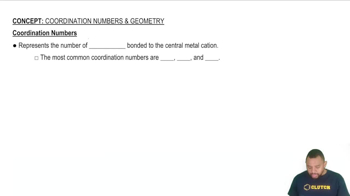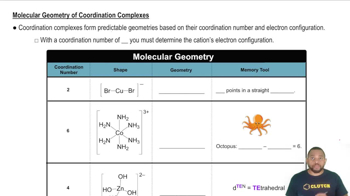What is the formula, including the charge, for each of the following complexes?
(a) An iron(III) complex with six water ligands
(b) A nickel(II) complex with two ethylenediamine and two bromide ligands
(c) A platinum(II) complex with two chloride and two ammonia ligands




